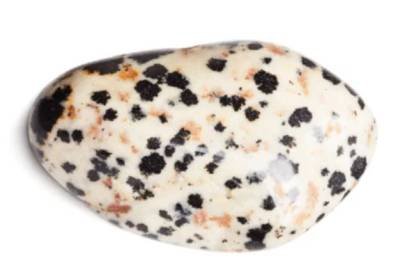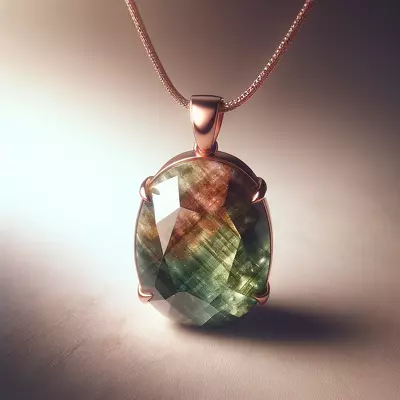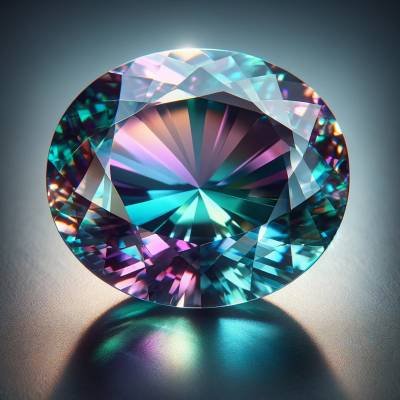Journey Through the Ages: The Remarkable Healing Properties of Alexandrite Unveiled
Alexandrite, a captivating gemstone known for its unique color-changing ability, has long fascinated jewelers and healers alike. Beyond its aesthetic allure, this rare mineral is believed to possess various therapeutic properties. Traditionally, alexandrite is thought to bring balance, reinforce self-esteem, and promote emotional healing. Its remarkable optical characteristics, shifting from green to red in different lights, are often seen as a metaphor for transformation, making it a symbol of renewal and regeneration.
I. Introduction to Alexandrite
A. Historical Background
Discovered in the Ural Mountains of Russia in the 19th century, alexandrite was named after the then-future Tsar Alexander II. Its discovery coincided with the young prince’s coming of age, symbolizing hope and change for the Russian people. This gemstone, rare and captivating, quickly became a coveted jewel in Russia, embodying national pride.
B. Physical and Optical Properties
Alexandrite stands out for its striking color-change phenomenon. In daylight, it exhibits a mesmerizing green hue, while under incandescent light, it transforms into a rich, purplish-red. This chameleon-like ability is due to its unique chemical structure, containing elements like chromium, iron, and titanium. The gem’s rarity and the distinctiveness of its color change have made it a sought-after stone for collectors and enthusiasts.
II. The Healing Properties of Alexandrite
A. Emotional and Psychological Benefits
In the realm of emotional healing, alexandrite is celebrated for its ability to balance the mind and emotions. It is believed to enhance self-esteem, improve willpower, and promote joy. This gem is often sought by those dealing with change, as it’s thought to help one navigate life’s transitions with resilience and optimism.
B. Physical Health Influences
While there’s no scientific evidence to support it, some alternative medicine practitioners attribute physical healing properties to alexandrite. It is said to aid in the treatment of pancreatic disorders, strengthen the nervous system, and support recovery from chronic illnesses. These beliefs stem from the gemstone’s perceived ability to realign internal energy flows.
C. Spiritual and Energetic Attributes
Spiritually, alexandrite is revered for its potential to align the physical and spiritual realms. It’s often associated with the crown and heart chakras, fostering a sense of wholeness and harmony. Its color-changing nature is also symbolic of spiritual transformation, making it a favorite for meditation and mindfulness practices.
III. Alexandrite in Alternative Therapies
A. Use in Crystal Healing
In crystal healing circles, alexandrite is used for its purported abilities to harmonize emotions and invigorate the spirit. Practitioners may place the stone on specific body parts or chakras to enhance its therapeutic effects, utilizing its color-changing properties as a guide for healing.
B. Role in Chakra Balancing
Given its association with multiple chakras, alexandrite is a popular choice for chakra-balancing sessions. Its energies are believed to help unblock and align the heart and crown chakras, facilitating a better flow of life force throughout the body.
C. Integration in Modern Wellness Practices
Alexandrite’s appeal extends into modern wellness practices. It’s often included in spa treatments, yoga sessions, and meditation retreats as a tool for enhancing emotional and spiritual well-being. Its allure lies not just in its physical beauty but also in its perceived ability to promote inner peace and clarity.
IV. Scientific Perspective on Alexandrite’s Healing Properties
A. Analysis of Mineral Composition
From a scientific standpoint, the healing claims of alexandrite are not supported by empirical evidence. However, the mineral’s unique composition and color-change properties have been extensively studied. Researchers have examined the gemstone’s structure to understand its optical phenomena, providing insights into mineralogical processes.
B. Review of Research and Studies
Despite the lack of scientific backing for its healing properties, alexandrite has been the subject of various studies focusing on its geological formation and chemical properties. These investigations offer a deeper understanding of the stone’s rarity and value but need to substantiate the health benefits attributed to it.
C. Expert Opinions
Experts in gemology and mineralogy often discuss alexandrite in terms of its rarity and market value. While acknowledging the cultural and historical significance of beliefs in its healing powers, they maintain a perspective grounded in scientific analysis of its physical attributes.
V. Cultural and Historical Significance
A. Alexandrite in Folklore and Mythology
In various cultures, alexandrite has been enveloped in myths and legends. Russian folklore, for instance, regards it as a stone of good omen, bringing luck and prosperity. Its ability to change color has been interpreted as a sign of prophetic powers.
B. Historical Uses and Beliefs
Historically, alexandrite has been used in a variety of cultural rituals and healing practices. It was especially prized in Russia and parts of Asia, where it was believed to bring balance and renewal. These historical uses reflect the deep human fascination with gemstones and their perceived powers.
C. Contemporary Symbolism
Today, alexandrite is more than just a gemstone; it’s a symbol of adaptability and transformation. Its dual colors resonate with those seeking balance in a rapidly changing world. Jewelers and designers continue to celebrate its unique beauty, often using it in pieces that signify major life changes or milestones.
VI. FAQs
Q: What is amethyst good for spiritually?
A: Amethyst is believed to have a calming and soothing energy, making it ideal for spiritual growth and stress relief. It is often used to enhance intuition, promote inner peace, and help with meditation practices.
Q: What does the Hawk’s eye bracelet mean?
A: The Hawk eye stone bracelet, often associated with the gemstone tiger’s eye, is believed to offer protection, increase focus, and bring clarity of vision. It’s thought to help the wearer make clear decisions and protect them from negative energies.
Q: How rare is alexandrite compared to other gemstones?
A: Alexandrite is considered one of the rarest gemstones, even more scarce than diamonds. Its unique color-changing properties and limited natural sources contribute to its rarity.
Q: Can alexandrite change color in all types of light?
A: Yes, alexandrite changes color under different lighting conditions. In daylight, it appears green, and under incandescent light, it turns to a reddish-purple. This phenomenon is due to its complex chemical composition.
Q: Is alexandrite a birthstone, and for which month?
A: Alexandrite is one of the birthstones for June, alongside pearls and moonstones. It is particularly cherished for its uniqueness and the symbolic meanings associated with it.
Q: Are there synthetic versions of alexandrite?
A: Yes, synthetic alexandrites exist and are created in laboratories. These lab-grown stones mimic the color-changing properties of natural alexandrite but are more affordable and accessible.
Q: What should I look for when buying alexandrite jewelry?
A: When buying alexandrite jewelry, consider the stone’s color change quality, clarity, cut, and carat weight. Ensure it’s from a reputable source, and if possible, get a certification of authenticity.
VII. Conclusion
A. Summary of Healing Properties
Alexandrite is treasured not just for its aesthetic qualities but also for its purported healing properties. It is believed to offer emotional, physical, and spiritual benefits, such as balancing emotions, aiding physical ailments, and aligning spiritual energy. While scientific evidence is lacking, the cultural and historical significance of these beliefs is undeniable.
B. Future Directions for Research
There’s a growing interest in exploring the potential psychological and physiological effects of gemstones like alexandrite. Future research could focus on empirical studies to understand any placebo effects or psychological impacts these gemstones may have on individuals.
C. Personal Reflections on Alexandrite
Alexandrite’s allure lies in its rare beauty and the charisma of its color-changing properties. Whether or not its healing properties are empirically proven, the gemstone continues to captivate and inspire, symbolizing transformation and adaptability in a constantly changing world.
VIII. Suggested Readings
Before delving into the intriguing world of alexandrite and gemstones, it’s enriching to explore literature that offers insights and knowledge. The following are some recommended books available on Amazon:
- “Gemstones of the World” by Walter Schumann – A comprehensive guide featuring detailed information on gemstones, including alexandrite, with vivid photographs and practical advice.
- “The Crystal Bible” by Judy Hall – An extensive directory of crystals and gemstones, this book explores their properties, uses, and how they can impact our lives.
- “Color Change Gems” by Renee Newman – This book specifically delves into the fascinating world of color-changing gemstones like alexandrite, explaining their unique properties and value.
- “Healing Crystals and Gemstones: From Amethyst to Zircon” by Dr. Flora Peschek-Bohmer and Gisela Schreiber – A detailed exploration of the healing properties associated with various gemstones.
- “The Curious Lore of Precious Stones” by George Frederick Kunz – A classic text that delves into the myths, legends, and folklore surrounding precious stones, including alexandrite.
These books offer a blend of scientific knowledge, historical context, and spiritual insights, making them ideal for anyone interested in the fascinating world of gemstones. Whether you are a collector, a practitioner of alternative therapies, or simply someone intrigued by the beauty and lore of gemstones, these readings provide a wealth of information and enjoyment.







